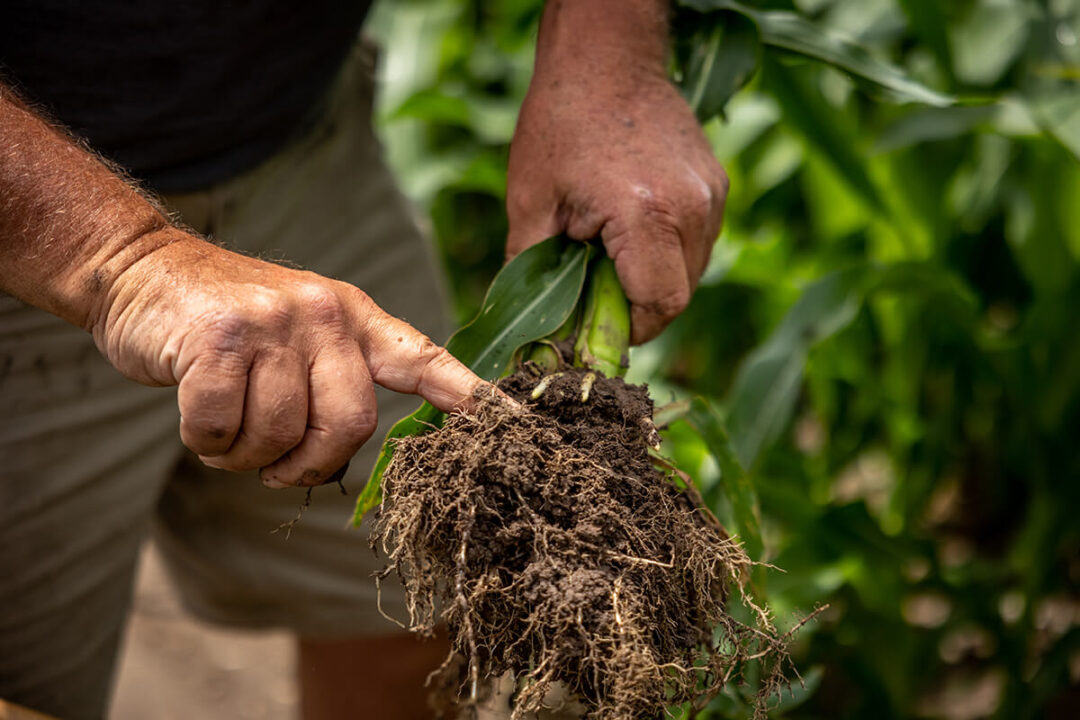Do High Yielding Soybeans Need To Be Fertilized With Nitrogen?
Are higher yielding soybeans running short on N? Do they need additional N fertilizer to ensure they are properly fed? A group of scientists at University of Nebraska examined 108 published scientific studies on this topic to see if any trends could be discovered, according to IPNI Plant Nutrition Today. Soybean yields in the studies ranged from 9 to 88 bu/A, and averaged 40 bu/A. Here are a few of their findings.
Soybean N requirements. The above-ground portion of a soybean plant takes up, on average, about 4.72 lb N/bu. This means that a 40 bu/A crop takes up about 189 lb N/A, while an 88 bu/A crop takes up about 415 lb N/A. The average concentration of N in the seed was found to be 6.34%. This works out to be 3.3 lb N/bu. So that same 40 bu/A crop will remove 132 lb N/A from the field at harvest, while the 88 bu/A crop will remove 290 lb N/A.
Sources of N for soybean uptake. Soybeans get their N from three sources: 1) N2 fixation by Bradyrhizobium, 2) nitrate and ammonium in the soil, and 3) fertilizer N. The studies showed that on average, 50 to 60% of the N in soybeans comes from N2 fixation. Normally, the remainder comes from the N in the soil. The maximum amount of N2 that can be fixed was considered by the authors of the review to be 300 lb N/A. When fertilizer N is applied, it can reduce the amount of N2 fixation. This reduction is exponential. The first 45 lb N/A can reduce maximum N fixation to about 190 lb N/A. Applying 90 lb N/A can reduce it to 125 lb N/A.
Soybean response to fertilizer N. Information about soybean response to N fertilization was reported in 67 of the 108 studies. Positive responses to N fertilization occurred in about half of them. The average yield response was 8 bu/A. A slightly higher average response of 10 bu/A occurred when low rates of N (less than 45 lb N/A) were applied after growth stage R3 (beginning pod). Typically, seasonal N demand peaks after this stage. When a subset of 12 studies with soybean yields greater than 67 bu/A was examined, 9 of the studies (75%) responded positively to N fertilization. The authors concluded that in high yielding environments, fixed N and soil N supplies may not be great enough to meet the N demands of the plant, increasing the probability that soybean may respond to N fertilization.
Conditions favoring soybean response to N. High yielding environments may have a greater chance of responding to fertilizer N, but at lower yields, there are still several situations the authors listed where responses to N were more likely. These included poor establishment of the nodule system, extremely low soil N supplies at planting, plant water stress, soil pH problems, low soil temperature, or an absence of native Bradyrhizobium resulting from a cropping history with infrequent or no legumes.
So do high yielding soybeans need to be fertilized with N? The answer appears to be that they might, but the yield response may only be marginally profitable. When soybean prices outpace the price of N, profitability is more likely, but such a window is usually not long-lasting. Therefore, N fertilization of soybeans still carries a financial risk even under high yielding environments. Local trials can help determine whether or not the practice makes sense in individual situations.






